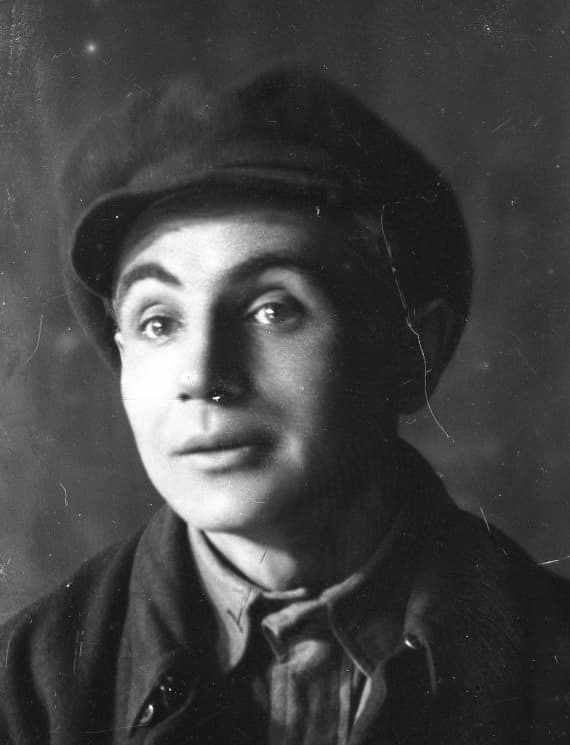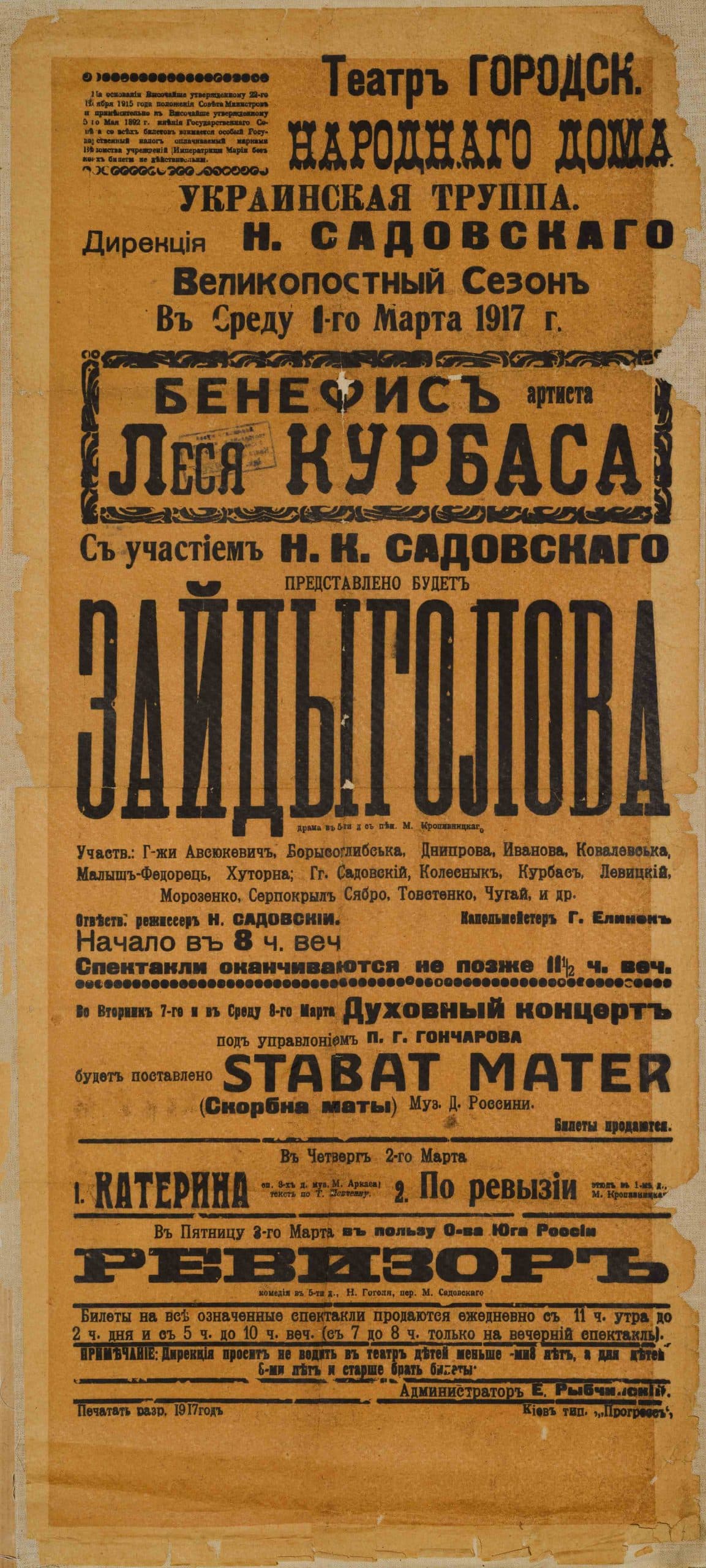Mykola Karpovych Sadovskyi invited Les Kurbas to his Kyiv theater, better known as the first Ukrainian resident theater, in autumn of 1915; however, Kurbas and his mother didn’t arrive in Kyiv until March 28, 1916. The young actor from Galicia was invited to replace the theater’s previous leading actor – Ivan Marianenko. Kurbas played thirteen roles during his year with Sadovskyi’s troupe, mostly in the classical Ukrainian repertoire. He also played Zbigniew (Mazepa by Juliusz Słowacki) and Khliestakov (The Government Inspector by Mykola Hohol), as well as roles in modern Ukrainian plays: Antos in The Lie by Volodymyr Vynnychenko, Vagner and Roman in works by Spyrydon Cherkasenko. Les Kurbas’s involvement in the Mykola Sadovskyi Theater helped its owner maintain its artistic level and image as a theater with diverse themes and genres.
Mykola Sadovskyi established his collective as a private enterprise in 1906. After touring Ukraine, the theater became stationary, beginning its first Kyiv season in the Trinity People’s House in the autumn of 1907. Its actors included: H. Borysohlibska, I. Zahorskyi, Maria Zankovetska, F. Levytskyi, I. Marianenko, S. Pankivskyi, O. Petliash, O. Polianska, and others. M. Sadovskyi, M. Starytska, F. Levytskyi, I. Marianenko and Y. Stadnyk were the artistic directors at different times. Music and stage design was provided by artists I. Buriachok and V. Krychevskyi; the composers and choirmasters were V. Verkhovynets, O. Koshyts, H. Yelinek; musical accompaniment was provided by M. Lysenko and K. Stetsenko.
The theater aimed to continue the best traditions of Ukrainian stage art of the 19th century with an updated repertoire. The theater’s cast achieved a high level of acting, musical and decorative design of its performances. Its repertoire was constantly expanding, primarily through the addition of new Ukrainian drama, Russian classics and foreign plays. Sadovskyi staged one of the first performances in Ukrainian of Mykola Hohol’s comedy The Government Inspector (1907). Other plays by Hohol, Chekhov and Ostrovsky later appeared on the theater’s stage. The troupe’s repertoire included European dramas: The Good Hope by Herman Heijermans, Free Wild by Arthur Schnitzler, Old Mine by Marie Delle Grazie, works by Polish playwrights B. Gorczynski, Juliusz Słowacki, Lucjan Rydel and Gabriela Zapolska, as well as plays by Jewish playwrights. As director of the theater, M. Sadovskyi took a bold step by putting on plays by V. Vynnychenko: The Lie, Young Blood and Natus; S. Cherkasenko: The Earth, The Newspaper Error, The Story of the Old Mill; dramatic etudes by Oleksandr Oles. In 1914, Lesia Ukrainka’s Fireplace Master was first performed here. Sadovskyi’s Theater also gave musical performances: Christmas Night, Natalka Poltavka, Aeneid by Mykola Lysenko, Kateryna by M. Arkas, The Rural Honor by Pietro Mascagni, The Bartered Bride by Bedřich Smetana, Zaporozhian Cossack Beyond the Danube by Semen Hulak-Artemovskyi, Halka by Stanisław Moniuszko.
In the last period of the theater’s activity (1916-1919) its cast was joined by new young actors, including Les Kurbas, who performed there until the spring of 1917. During his time with Sadovskyi’s troupe he met representatives of the artistic bohemia, organized the studio of the Young Theater, which included actors from Sadovskyi’s Theater, students of the Mykola Lysenko Music and Drama School and amateurs.
During their final Kyiv seasons (1916-1917-1918), the ensemble performed at the Second City Theater, and in 1919 Mykola Sadovskyi and some of the actors left Kyiv. The troupe performed in Vinnytsia, Kamianets-Podilskyi and other cities, received the status of a State Theater of the Ukrainian People’s Republic, and disbanded in 1920.


